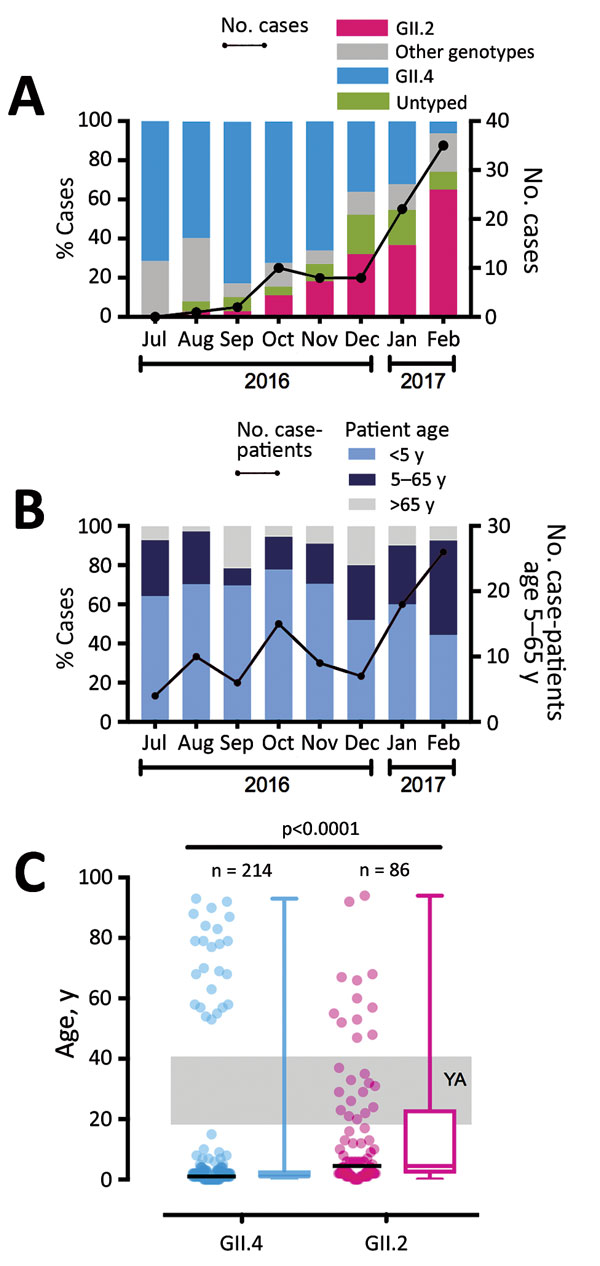Volume 23, Number 11—November 2017
Dispatch
Increased Detection of Emergent Recombinant Norovirus GII.P16-GII.2 Strains in Young Adults, Hong Kong, China, 2016–2017
Figure 1

Figure 1. Emergence of a new recombinant norovirus GII.P16-GII.2, Hong Kong, China, winter 2016–2017. A) Distribution of norovirus genotypes, July 2016–February 2017. B) Proportion of norovirus case-patients among 3 stratified age groups. C) Age distribution of hospitalized case-patients with GII.4 and GII.2 infections. A total of 214 GII.4 and 86 GII.2 case-patients are shown. Black horizontal lines represent medians. Gray shading denotes young adults (YA; 18–40 years of age). p value calculated by using Mann-Whitney U-test.
Page created: October 17, 2017
Page updated: October 17, 2017
Page reviewed: October 17, 2017
The conclusions, findings, and opinions expressed by authors contributing to this journal do not necessarily reflect the official position of the U.S. Department of Health and Human Services, the Public Health Service, the Centers for Disease Control and Prevention, or the authors' affiliated institutions. Use of trade names is for identification only and does not imply endorsement by any of the groups named above.